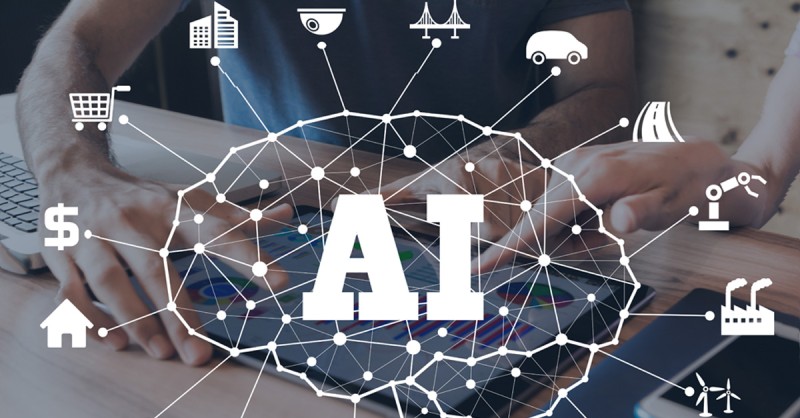Part 1: AI use cases: Cost Reduction
Whether it is about finding actionable knowledge in existing databases, mining text, interpreting large amounts of new IoT data and video streams, or automating customer support – companies increasingly turn to AI. The technology is as versatile as AI’s use cases. In this little series we will investigate some of the most promising areas.
How does AI reduce costs?
One of the main drivers for implementing AI is cost reduction. Many large enterprises use AI in long-term efforts to streamline processes, compensate lacking resources and reduce overhead costs. For a lot of industries, the expenses of AI projects have been going down over the last years, due to the increasing availability of customizable AI services in the cloud. Today SMBs without any prior experience, let alone a dedicated data team, can start using AI-enabled tools. This is possible by customizing existing pre-trained models, using low code / no code tools, and tapping into the wide choice of AI cloud platforms. Here are some typical examples of cost-saving AI use cases which can be implemented with mature modules needing relatively small resources:
AI Use Cases: Reduce inventory and the risk of aging stock
Using past data, companies can create models that are specific to their business and include many parameters like location, weather, seasonality, holidays, etc. to optimize their orders and ensure a quick turnover of stock.
Translate documents at scale
Translating formatted documents in batches across more than 100 languages doesn’t involve an army of translators and high cost anymore. Powered by the latest innovations in machine translation, manuals or brochures can be translated within minutes. Possible use cases are endless, ranging from translation for call centers, multilingual conversational agents to in-app communication or product documentation and manuals.
Enhance human perception with AI Computer Vision
AI-enabled video analytics is key for the safe and efficient operation of transportation, oil and gas, telecom, and many other industries. Computer vision systems can detect objects and incidents in real time from any video feed through tireless and precise artificial intelligence and machine vision. Companies and authorities can implement efficient situational awareness and intelligent automation by gathering relevant data for enhanced security, smart cities, and manufacturing. The detection of fraudulent payments is a type of anomaly detection, too.
AI energy cost reduction
In factories and buildings, AI-based systems can monitor and collect data from IoT devices and use the data to perform prescriptive analytics. AI can then manage energy consumption based on multiple parameters, identify bottlenecks and idling equipment, reduce energy used for cooling and heating, or balance between grid and renewable sources. The reduced environmental impact is an added benefit. The overall savings from improved efficiency and reduced energy bills can be significant, and an AI-based system can pay for itself in a short period of time.
Employ a chatbot or a virtual personal assistant
Believe it or not: tools from software vendors allow the creation of a chatbot, including the underlying knowledge base and cloud services in under an hour. The technological basis behind this are Natural Language Processing components that extract knowledge from existing Q&A databases, websites, documents, or structured data. The benefit is obvious: near-instantaneous support, 24/7 and with a perfectly replicable customer experience. A low code or no code solution can be used to create and train a chatbot and even integrate it into company’s chat solutions.
AI cost reduction by automating customer support while increasing satisfaction
First level support is a classical use case for AI. Many customers questions can be solved very quickly by following a strict and simple logic, inquiring the specific challenge the customer is experiencing. Not only can problems be solved very quickly and efficiently, but customer satisfaction is much higher, too.
AI Cost Reduction: Summary
The ALSO AI Team works with a variety of vendors, developing a wide range of products from Translation Tools to Chatbots and Cybersecurity applications, to name just a few. Follow our series to learn what other benefits the use of AI tools can bring to your and your customers’ business. Next, we are going to look into the analytical benefits of AI, for example with pattern recognition or the evaluation of IoT-based data streams, that can help companies to increase their revenue.


